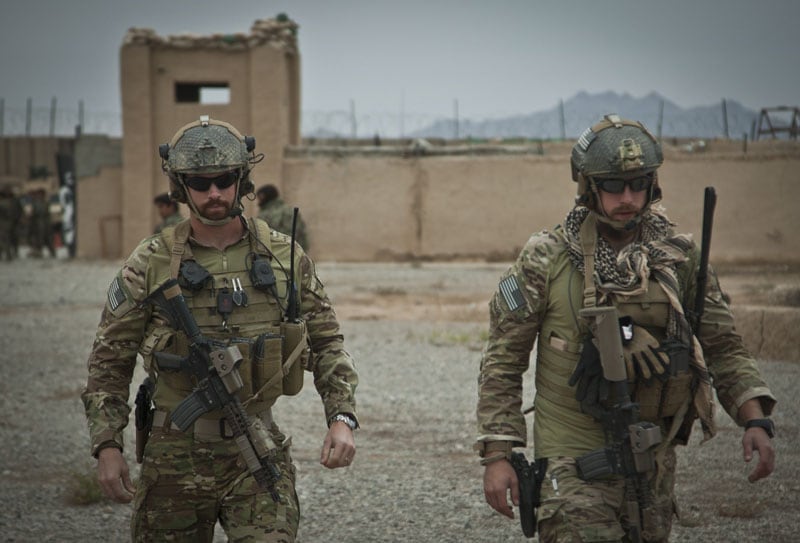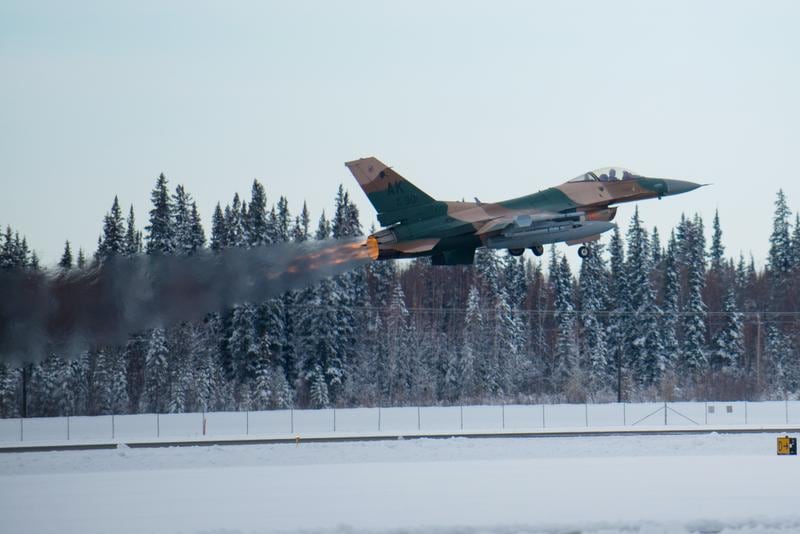The defective equipment is manufactured by Ceradyne Defense, a company that has supplied the U.S. military for decades and shares similar technology with other armor plates in the Defense Department's inventory. This technology failure has been the focus of a months long analysis overseen by SOCOM, according to documents reviewed by Military Times. The Army's Enhanced Small Arms Protective Insert plate shares similar components and construction methods.
A SOCOM spokesman acknowledged the problem in an email, saying a manufacturing defect was found "in a small percentage [of] ballistic armor plates issued to Special Operations Forces." "SOCOM implemented measures to test and if needed withdraw [a]ffected plates from operational inventories," wrote spokesman Kenneth McGraw. "As a precautionary measure, SOCOM is currently in the process of replacing identified ballistic plates. To date, there has not [been] an impact on Special Operations missions or [any] injuries as a result of defective plates."
McGraw added that although a significant number of plates are being recalled, "that does not necessarily mean that many plates are defective." He said the defect has been found in less than 5 percent of the plates tested. He credited Ceradyne with identifying the root cause of the defect and taking action "that should correct" the problem. more

Representatives for 3M, which offered to buy Ceradyne, could not be reached at 3M headquarters in St. Paul, Minn.
In October, SOCOM issued guidance to all corners of the special operations community explaining the recall and outlining procedures for a test that must be performed each time the gear is worn, a move officials hope will ensure the gear that special operators wear in combat still stops the bullets it is designed to defeat.
Officials who oversee acquisition and upkeep of SOCOM's personal protective equipment determined the SPEAR Generation III armor plates, as they're known, "display a latent delamination defect," according to an unclassified message sent in March to all members of SOCOM. The message was updated in October and obtained by Military Times.
When delamination occurs, the plates' internal components separate, creating a void that compromises the ability to stop direct hits.
The document notes that specific production lots — Nos. 1 through 24 — have a "higher probability" of being defective, and all are being recalled and taken out of service.
"Lots 25 through 39 are not being replaced and will remain in the field," the document states.
For plates from those lots, troops must perform a "tap test" before taking armor on any mission, according to the document distributed by SOCOM's operations directorate. To perform the test, troops tap the back of the plates with a metallic cylinder and listen for a "ting" or a "thud." A ting means the plate is intact. A thud means it's compromised.
Any plates in lots 25 through 39 that fail the tap test must be removed from service.
Even as Ceradyne and SOCOM officials are working to identify and replace defective plates, an $860 million acquisition offer by 3M is pending a Nov. 27 vote by Ceradyne investors.
Ceradyne Inc. describes itself as a developer and manufacturer of ceramic components and systems for a wide range of uses. Defense products account for about 40 percent of its business.
According to documents posted on Ceradyne's website and since removed, the defect seen in SPEAR Gen III plates is similar to problems previously identified in other plates built by Ceradyne for use by SOCOM. Ceradyne identified delamination between the boron carbide ceramic and stainless steel metal on the company's swimmer's plate as the cause of the lot test failure.
The defect was uncovered during a government quality assurance lot test of swimmer's plates. Officially called Tactical Stand Alone Gen III armor plates, they were part of the same $406 million contract SOCOM issued to Ceradyne Defense in January 2008.
The swimmer's plates were recalled in 2011 after limited fielding. Testing showed internal components of the plates failed, rendering them ineffective. These results alerted government officials to a possible problem with the SPEAR Gen III plates, as they incorporate the same technology and are manufactured by the same company.
Documents filed in late September with the Securities and Exchange Commission outline the trouble between Ceradyne Defense and SOCOM. Among other things, they detail several stop-work notices and point to a mixed reaction to Ceradyne's plan to fix defective plates and the manufacturing process. SOCOM refused to buy any more swimmer's plates, Ceradyne reported, but it allowed for future purchases of SPEAR Gen III plates.
In January, after the SPEAR Gen III plates were widely fielded, tap testing revealed plates that previously passed quality assurance tests during the manufacturing process were later failing without explanation. This time-dependent tap test failure prompted SOCOM's recall.
Since the recall, SOCOM has agreed to allow Ceradyne Defense to resume production of the SPEAR Gen III plates remaining on its contract — about $17 million worth of equipment, according to a SOCOM source — using a revised manufacturing method the company says may reduce failure rate. These plates will be marked "Gen IIIA" and could be used to replace recalled plates from earlier lots.
But that may be a stopgap measure. In September, SOCOM awarded a contract for replacement plates using an "unusual and compelling urgency" contracting vehicle reserved for circumstances in which the government has few alternatives for force protection products. The contract was awarded to Leading Technology Composites, not Ceradyne Defense.
PHOTOS: Sgt. Pete Thibodeau, Courtesy Department of Defense.
Top- A coalition force member maintains security during an Afghan National Security Force led security patrol in order to deny the enemy freedom of movement in Khak-E-Safed, Farah province, Afghanistan, Oct. 30, 2012. ANSF have been taking the lead in security operations, with coalition forces as mentors, to bring security and stability to the people of the Islamic Republic of Afghanistan.
Bottom- Coalition force members walk through an Afghan National Army compound during a visit with Afghan National Security Force partners in Farah province, Afghanistan, Nov. 21, 2012. Afghan National Security Forces have been taking the lead in security operations, with coalition forces as mentors, to bring security and stability to the people of the Islamic Republic of Afghanistan.




